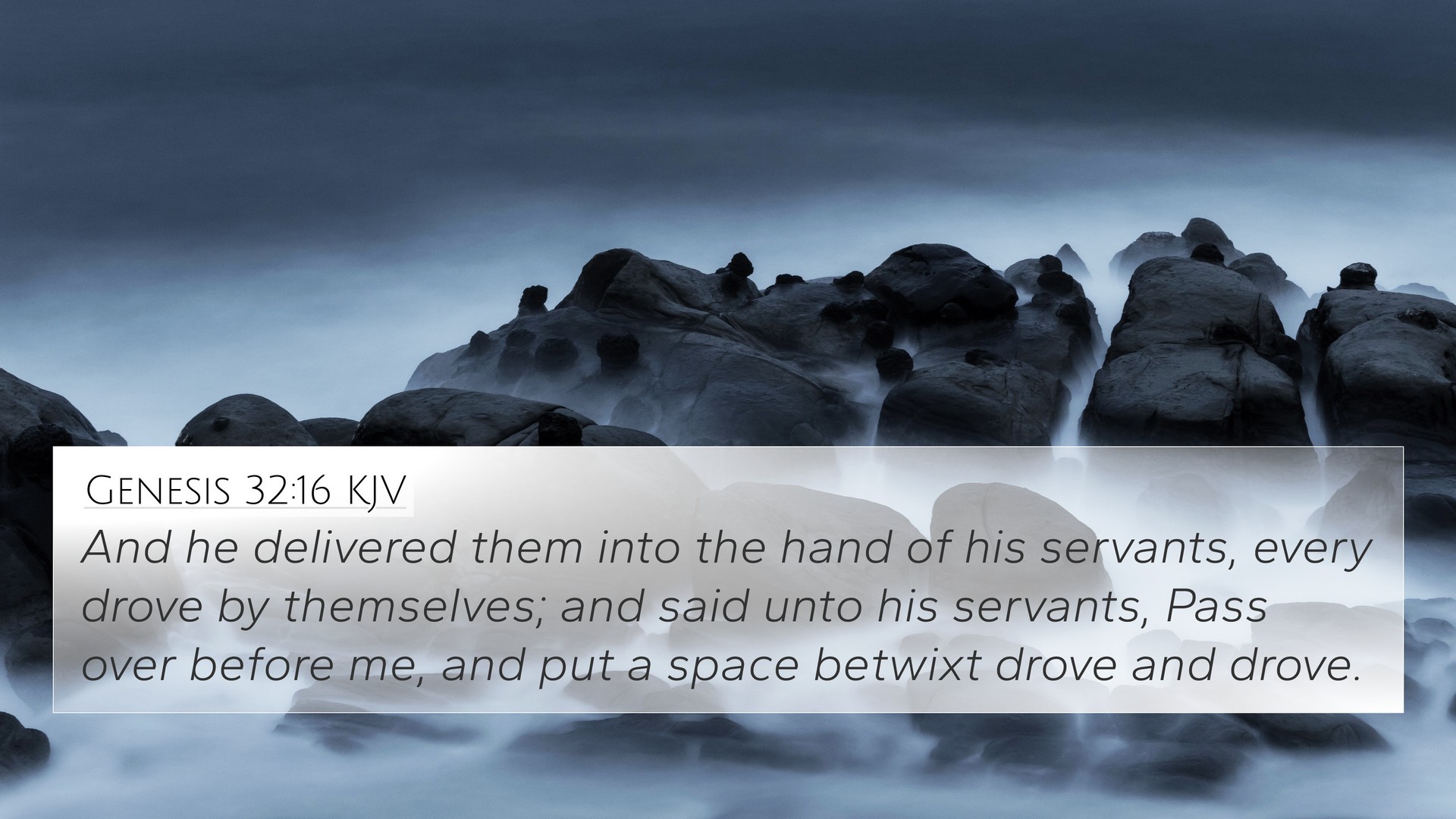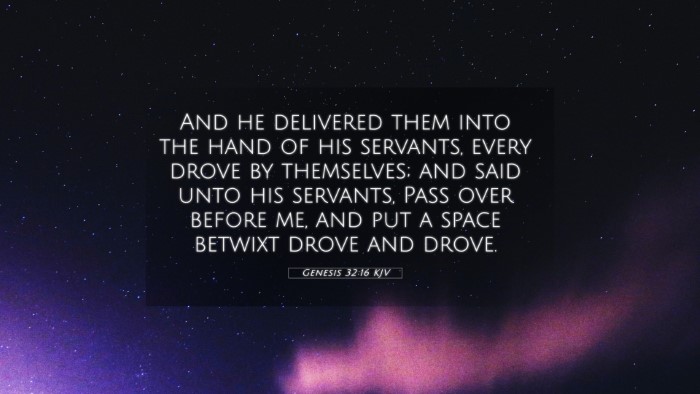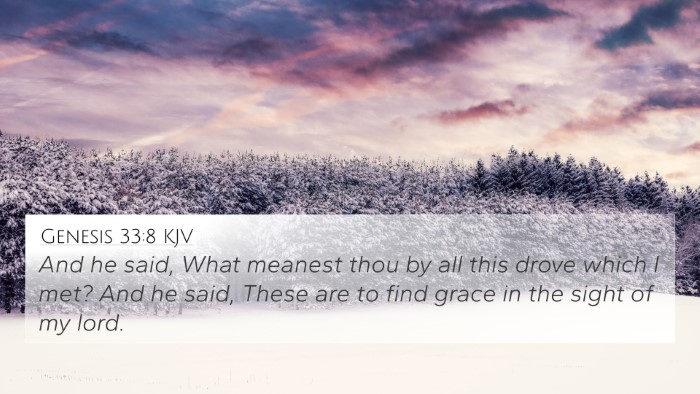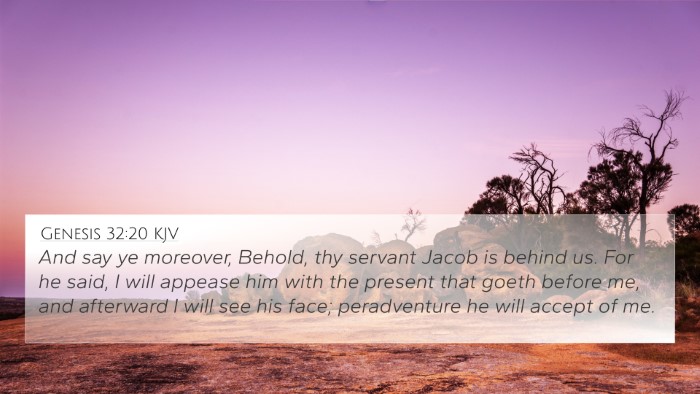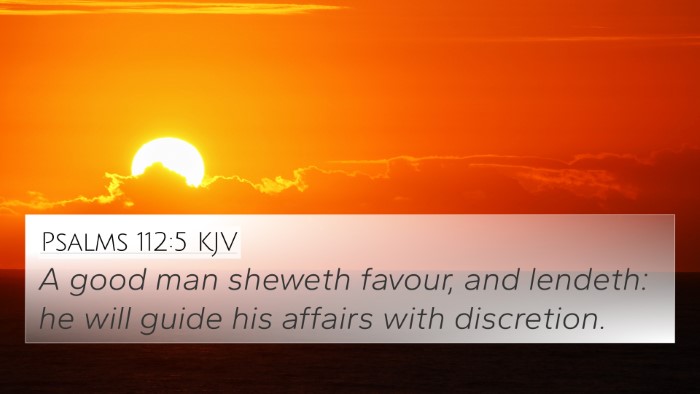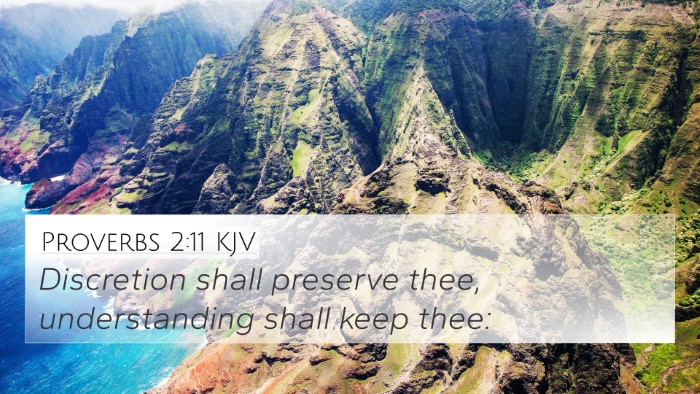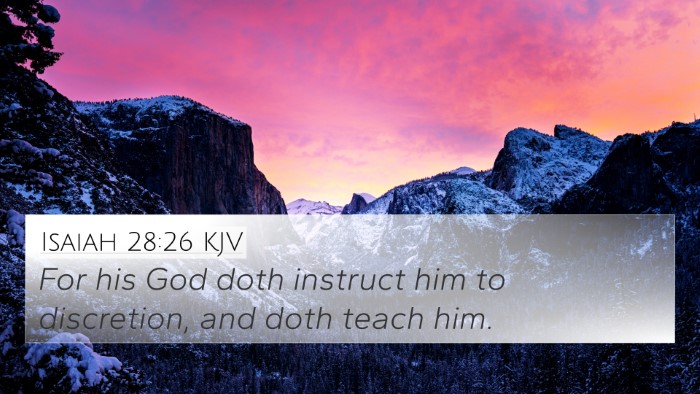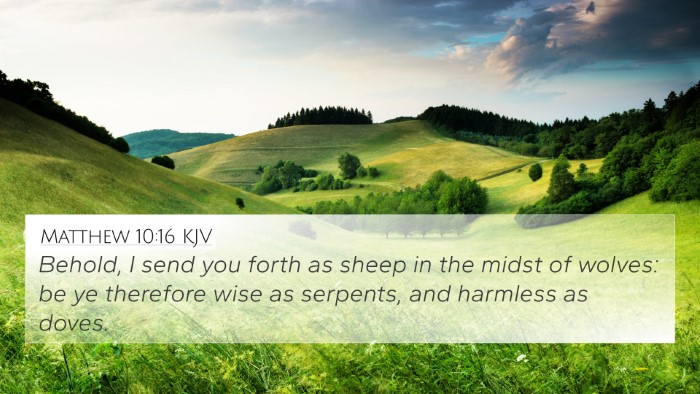Understanding Genesis 32:16
Genesis 32:16 is a pivotal verse within the narrative of Jacob's return to his homeland, highlighting his preparations and anxieties as he faces his brother Esau after years of estrangement. This verse reads:
"And he delivered them into the hand of his servants, every drove by themselves; and said unto his servants, Pass over before me, and put a space betwixt drove and drove."
Summary of the Verse
This verse illustrates Jacob's strategic approach as he prepares to confront Esau. He divides his possessions into groups (or "drove") and sends them ahead, possibly to appease Esau's potential anger with gifts. This decision reflects Jacob's concern for his family’s safety and his desire to ease the tension of their impending meeting.
Commentary Insights
Examining this verse through various public domain commentaries provides deeper understanding:
-
Matthew Henry's Commentary:
Henry elucidates that Jacob's act of sending his possessions in separate droves demonstrates prudence. He aims to lessen the impact should Esau react unfavorably. Jacob's division of his possessions symbolizes his desire to safeguard his family while simultaneously paying homage to his brother, indicating both fear and preparedness.
-
Albert Barnes' Commentary:
Barnes emphasizes the calculated nature of Jacob's actions. By placing a space between the droves, he aims to allow Esau to process the presents one group at a time. This slow introduction may mitigate Esau’s anger and build goodwill, demonstrating Jacob's understanding of human psychology and the need for diplomacy.
-
Adam Clarke's Commentary:
Clarke remarks on the implications of Jacob's fears. His strategic separation of the droves is not merely practical, but it reveals his inner turmoil and uncertainty about Esau's reaction. Clarke suggests that Jacob's actions are a blend of faith in God and personal apprehension, highlighting a theme of dependence on divine guidance in times of distress.
Bible Verse Cross-References
To appreciate the richness of Genesis 32:16, it is valuable to explore its connections with other scripture. Here are some relevant cross-references:
- Genesis 27:38-41: The background of Jacob's fear of Esau, rooted in the blessing Jacob received through deception.
- Genesis 32:3-5: Jacob's earlier preparations for meeting Esau, revealing his anxiety and planning.
- Proverbs 15:1: Insights on soft answers turning away wrath, which aligns with Jacob’s intention to appease Esau.
- Matthew 5:25: Jesus' advice on reconciling with adversaries, reflecting the theme of resolution and peace found in Jacob’s actions.
- Ruth 2:14: The concept of kindness and favorable greetings, echoing Jacob’s desire to meet Esau warmly.
- James 1:19: The principle of being quick to listen, emphasizing the importance of understanding and response, which is applicable in Jacob’s approach to Esau.
- Romans 12:17-21: Instructions for peaceful living and leaving vengeance to God, relevant to Jacob’s situation with Esau.
Thematic Connections
Genesis 32:16 is a profound example of the themes of reconciliation, conflict avoidance, and preparation within the Bible. These themes can be similarly observed in:
- Joseph’s Forgiveness (Genesis 50:15-21): The theme of reconciliation in Joseph's dealings with his brothers mirrors Jacob’s attempt to mend his relationship with Esau.
- David and Saul (1 Samuel 24): The respectful distance maintained by David when confronting Saul reflects similar elements of strategy and caution.
- The Prodigal Son (Luke 15:20): The act of the father running to embrace the son when he returns has profound parallels with Jacob’s hopes for a positive reunion with Esau.
Tools for Bible Cross-Referencing
To explore connections like those illustrated in Genesis 32:16, one may utilize several tools:
- Bible Concordance: An index that helps locate verses by keywords, useful for identifying cross-references.
- Bible Cross-Reference Guide: Handy references allowing readers to find scriptures that correlate or support each other.
- Bible Study Software: Technological tools that facilitate advanced cross-referencing and comparative studies.
- Online Bible Apps: Many provide easy access to cross-referencing and thematic studies.
Understanding Inter-Biblical Dialogue
Genesis 32:16 reflects the larger narrative of familial relationships and conflict resolution found throughout scripture. Understanding this dialogue between texts is essential for a holistic approach to Bible study. By examining how stories, themes, and teachings interconnect, believers can gain profound insights into God’s message and His relational dynamics.
Conclusion
In conclusion, Genesis 32:16 serves as more than just a historical point; it encapsulates themes of fear, preparation, and reconciliation that resonate throughout the Bible. The insights from public domain commentaries highlight Jacob's human experience, emphasizing reliance on God amidst turmoil, while the cross-references draw connections that enhance our understanding of biblical narratives.
